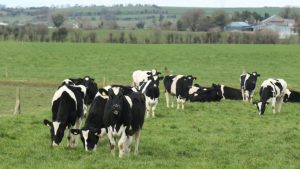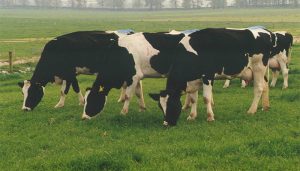
Ongoing lower demand in China for milk powder products saw its dairy import volumes decrease by 20pc in June this year, compared to the same time last year.
Figures from Fonterra show imports for the 12 months to June this year were back just over 12pc, as the country prioritises local brands.
Irish processors said it was a “seasonally quiet period for dairy markets”.
Tirlán chairman John Murphy said milk supply trends in the coming months are likely to be the key driver of any market movements in the third and fourth quarter.
Kerry Group said butter prices in Europe remain elevated as butterfat continues to outstrip supply, but that “the powder market is more challenged with the lack of whole milk powder demand out of China resulting in more skim milk powder availability in the market”.
It comes as the most recent Global Dairy Trade crept up marginally at 0.4pc, after being down 16.9pc in early July.
Unfavourable weather conditions in New Zealand saw production down 1.1pc compared to June 2023, but Australian milk production jumped 2.9pc over the previous 12 months.
In Europe, figures from Fonterra show that EU milk production was up 0.1pc year on year to June this year, with a 0.7pc increase in May, compared to May 2023, driven by ongoing growth in France and Poland.
On the export front, New Zealand, the EU and US saw monthly exports decrease, by as much as 6pc in New Zealand, while Australian exports rose by 5pc for the 12 months to May.
Fonterra says the fall in exports from New Zealand was mainly due to reduced demand for whole milk power and fluid milk products to key markets, including China and Algeria.
However, demand was up for SMP and cheese in key southeast Asian markets.
In Europe, lower export volumes of whole milk powder, fluid milk products and cream to key Asian markets saw exports fall by 2.3pc for the 12 months to May this year, mainly due to reduced trade with China, Algeria and Japan.
This, it says, was partially offset by higher export volumes of cheese to the US alongside an increase in whey exports.
Overall, in June, dairy product wholesale prices changes were mixed, with butter up on the previous month while cheese prices took a fall.
European butter prices were at the highest they have been since November 2022, at €6,370/t, up 6.4pc on May prices, according to the UK’s AHDB.
You can now read the most important #news on #eDairyNews #Whatsapp channels!!!
🇺🇸 eDairy News INGLÊS: https://whatsapp.com/channel/0029VaKsjzGDTkJyIN6hcP1K

























